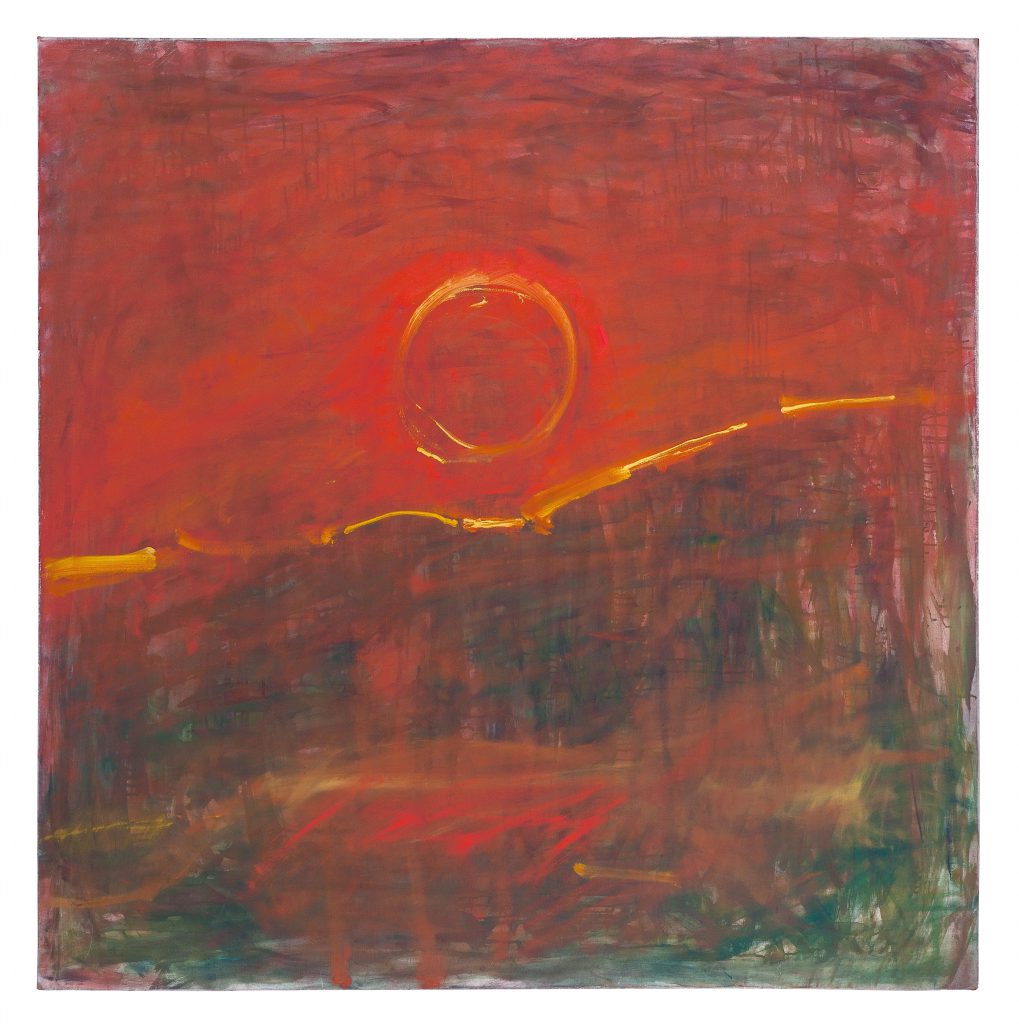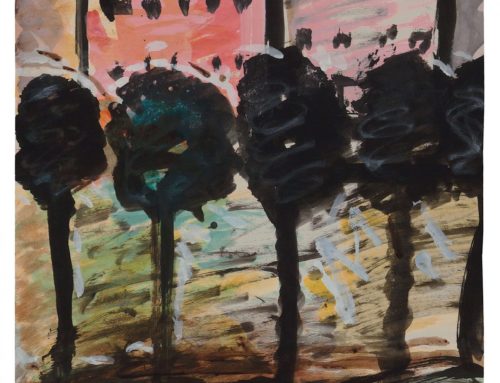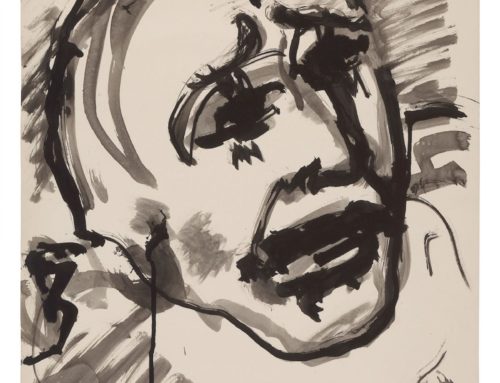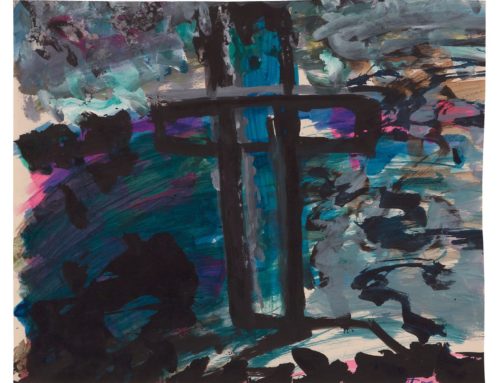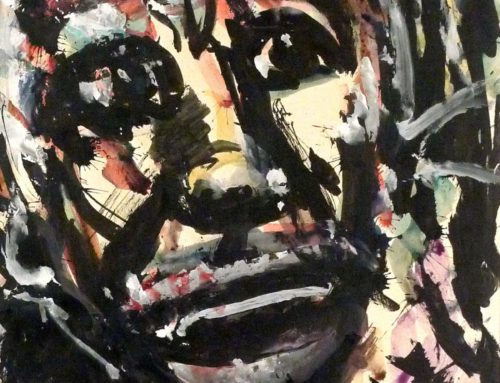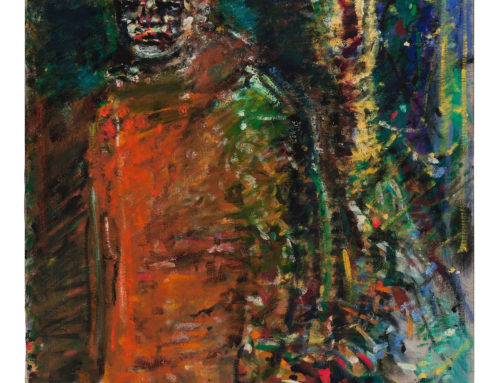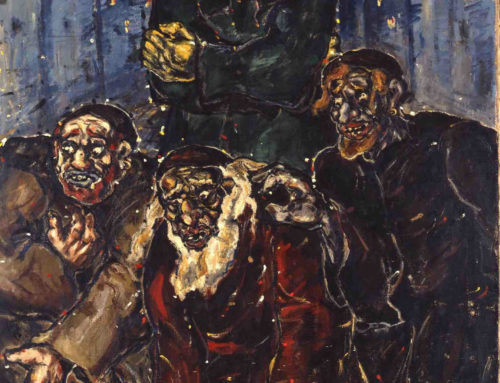“Untergehende Sonne” (“Setting Sun”), c. 1960
The subtitle of the catalogue of Fritz Ascher’s full exhibition that has travelled through Germany and will move through various cities in the United States is “To Live is to Blaze with Passion.” Among his post-war oil paintings, mostly landscapes, trees, and flowers (particularly sunflowers), there is surely no single painting that blaze with passion as much as this image. Is this painting abstract or representational? How does the artist use color—how many colors? Which colors, specifically?—to convey the absolute visual glory of the moment that he has captured? What, beyond sheer visual splendor, might one suppose this painting represents in terms of larger issues—particularly issues that events like the Holocaust force to the surface of the questioning mind, regarding humans and God? There is nothing overtly pertinent to the Holocaust in this image—at least at first look—but how might it, in spite of that outcome of the viewer’s first look, offer a connection to the Holocaust and the artist’s experience (and non-experience) of it?


